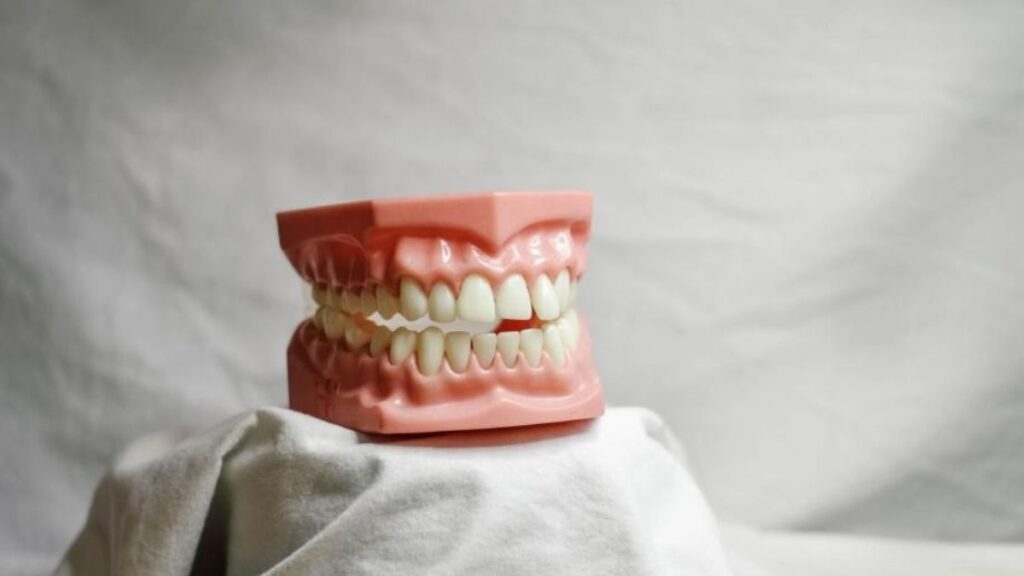Did you know that the tooth replacement market is projected to reach $30.6 billion by 2032? This shows the growing demand for advanced dental solutions.
Tooth replacement has improved over time. Ancient methods have evolved into advanced dental solutions. Today, the focus is on function, comfort, and appearance.
However, choosing the right option can be overwhelming. Understanding the options helps in making better decisions.
In this article, you’ll discover the evolution of tooth replacement in oral health. Keep reading to learn more.
The Beginning: Early Approaches
Tooth replacement dates back thousands of years. The Egyptians used ivory and bone to make simple prosthetics. Many ancient people lost teeth due to diet, poor hygiene, and wear.
The Greeks and Romans used gold wire to secure loose teeth. In China, craftsmen made dental bridges from animal tusks.
In the 15th century, Europeans created dentures using human teeth. These early dentures were uncomfortable and hard to clean.
Poor hygiene made them less effective over time. Despite their flaws, they marked an important step in dental history.
Plate Dentures: The Era of Comfort
As society advanced, plate dentures became a major improvement. By the 18th century, materials like vulcanite, porcelain, and rubber were used. These dentures were more comfortable than earlier versions.
They were also easier to make. However, they still lacked the strength of natural teeth. Despite their flaws, plate dentures restored smiles.
People could eat and speak more easily. They also felt more confident in their appearance.
Over time, designs improved for better fit and comfort. This era set the stage for modern denture advancements.
Advancements to Full and Partial Dentures
In the 19th and early 20th centuries, dentures improved. New materials made them more durable and natural-looking.
Full and partial dentures became more common. They offered a better fit for patients. However, they still had some challenges.
Many people struggled with denture slippage. This made eating and speaking difficult.
Dentists worked to improve stability and comfort. Stronger materials helped dentures last longer. These advancements paved the way for modern solutions.
The Birth of Dental Implants
Tooth replacement changed in the 1960s. Swedish surgeon Per-Ingvar Brnemark introduced dental implants.
The first successful implant was made from titanium. This new method created a strong base for artificial teeth. It was a breakthrough in dentistry.
Today, dental implants are a top choice. . Many patients prefer implants over dentures. This innovation continues to improve oral health.
The Benefits of Implants:
Natural Feel and Appearance
Dental implants look like real teeth. They match the color and shape of natural teeth. They also feel comfortable in the mouth.
Unlike dentures, they do not slip or move. This makes speaking and eating easier.
Implants blend seamlessly with a person’s smile. They help restore confidence in appearance. This makes them a popular tooth replacement option.
Improved Oral Health
Dental implants help protect overall oral health. They do not rely on neighboring teeth for support. This prevents damage to healthy teeth.
Unlike dentures, implants do not cause gum irritation. Implants stimulate the jawbone like natural teeth. This keeps the bone strong and healthy.
A stable jawbone helps maintain facial structure. Good oral health leads to better overall well-being.
Enhanced Chewing Ability
Dental implants restore strong biting power. They function like natural teeth. This allows people to eat a variety of foods.
Hard and chewy foods become easier to enjoy. Meals feel more natural and comfortable.
Unlike dentures, implants do not shift while eating. They stay firmly in place. This improves digestion by allowing better chewing.
Durability
Dental implants are built to last. They’re made from strong materials like titanium. With proper care, they can last a lifetime.
Unlike dentures, they do not need frequent replacements. This makes them a long-term investment.
Implants resist decay and wear. They stay strong even after years of use. Regular brushing and flossing keep them in good condition.
Modern Innovations in Tooth Replacement
Technology has improved tooth replacement methods. Computer-aided design (CAD) helps create precise implants. 3D printing allows for faster and more accurate production.
New materials increase comfort and durability. These advancements make tooth replacement more effective.
Customization is now a key focus. Patients receive treatments tailored to their needs. This ensures a better fit and natural look.
Modern techniques improve both function and appearance. Innovations continue to enhance dental care.
Integrating Technology in Oral Health
Technology is improving oral health care. New tools help with accurate diagnosis. Cone beam computed tomography (CBCT) provides detailed images.
Digital imaging helps dentists assess bone structure. These advancements make treatment planning more precise.
Better planning reduces surgery risks. Patients experience fewer complications. Healing time is often shorter. Improved accuracy leads to better results. Technology continues to enhance dental treatments.
Telemedicine and Remote Consultations
Telemedicine is growing in dentistry. Patients can now consult specialists from home. They receive expert advice without traveling.
This makes dental care more accessible. It also helps patients make informed decisions. Remote consultations save time and effort.
Virtual visits reduce the need for in-person checkups. Dentists can track progress remotely.
Patients get quick answers to their concerns. This is helpful for those in remote areas. Technology continues to improve patient care.
Comparing Tooth Replacement Options
There are many tooth replacement options. Each option has different benefits.
Choosing the right one depends on individual needs. Comparing tooth replacement options helps in making the best decision.
Consider these factors:
Cost
Tooth replacement costs vary by option. Dentures are usually more affordable. Implants cost more but last longer.
Bridges fall in between in terms of price. Insurance may cover some treatments. Financing options can help manage expenses.
Long-term costs should also be considered. Dentures may need frequent replacements. Implants need fewer repairs over time.
Maintenance costs differ for each option. A higher upfront cost may save money later. Budget and needs determine the best choice.
Longevity
Different tooth replacement options last for varying periods. Dental implants can last a lifetime with proper care. Bridges usually last 10 to 15 years.
Dentures may need replacement every 5 to 10 years. The durability of each option depends on materials and maintenance. Good oral hygiene helps extend their lifespan.
Choosing a long-lasting option saves money in the long run. Longevity is an important factor in decision-making.
Impact on Jaw Health
Different tooth replacement options affect jaw health. Dental implants help maintain bone structure. They stimulate the jaw like natural teeth.
Bridges and dentures do not prevent bone loss. Over time, missing teeth can lead to jaw shrinkage.
Jawbone strength is important for overall oral health. Bone loss can make future treatments harder. Implants provide the best support for the jaw.
Comfort
Comfort varies with each tooth replacement option. Implants feel the most natural. Dentures may cause gum irritation or slipping.
Bridges are fixed, making them more stable than dentures. A good fit improves daily comfort. Adjustments may be needed over time.
Aesthetics
The appearance of tooth replacements matters. Implants look the most like real teeth. Bridges also blend well with natural teeth.
Dentures may look less natural over time. Material and color choices affect the final look. A good fit improves confidence in smiling.
Eating and Speaking Ability
Some options make eating and speaking easier. Implants function like natural teeth. Bridges allow normal chewing and speech.
Dentures may slip, causing difficulty while eating or talking. A secure fit improves daily activities. Choosing the right option enhances quality of life.
Procedure and Recovery Time
Different treatments require different procedures. Implants need surgery and months of healing. Bridges take a few visits to complete.
Dentures can be made quickly but may need adjustments. Healing time affects daily life. Understanding the process helps in making the best choice.
The Future of Tooth Replacement
Tooth replacement is improving with new research. Technology continues to advance rapidly. Biocompatible materials are being developed.
Computer-generated implants offer better precision. Tissue engineering may help regrow lost teeth.
These innovations can change dental care. New methods may improve comfort and durability. Patients could have more natural-looking options.
Scientists are working on better solutions. Regenerative medicine could replace missing teeth naturally.
Advanced techniques may reduce the need for surgery. The future of tooth replacement looks exciting.
Importance of Oral Health Awareness
Understanding oral health is important for tooth replacement. Regular dental visits help detect problems early. Dentists educate patients about their options.
Early treatment prevents further complications. Good oral hygiene leads to better outcomes. Studies link gum disease to heart disease.
Poor oral hygiene can cause other health issues. Keeping teeth and gums healthy is essential. Preventive care reduces the risk of serious problems.
Exploring the Journey of Tooth Replacement
The evolution of tooth replacement has introduced many options. Early dentures have led to modern implants. Today’s advancements improve function, comfort, and appearance.
Different options suit different patient needs. Choosing the right method depends on personal factors.
Consulting a dentist helps find the best solution. A professional can recommend the most suitable option. The right choice restores confidence and improves oral health.
Was this helpful? If so, please keep browsing our site to find more useful information!







